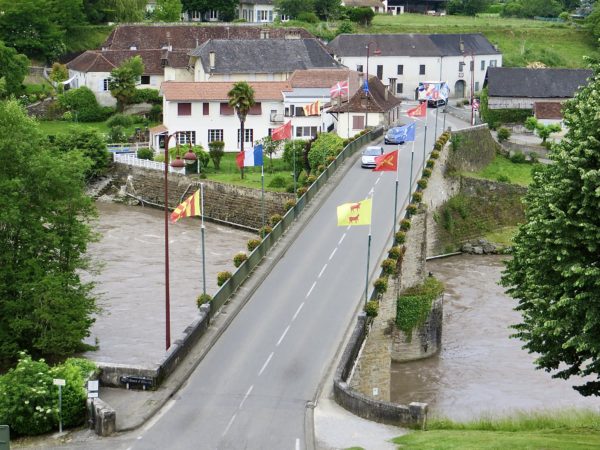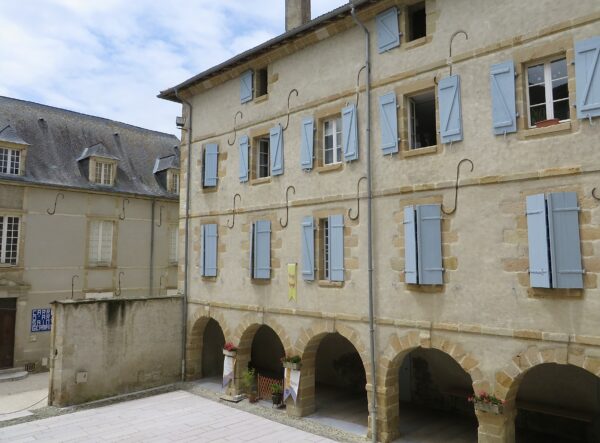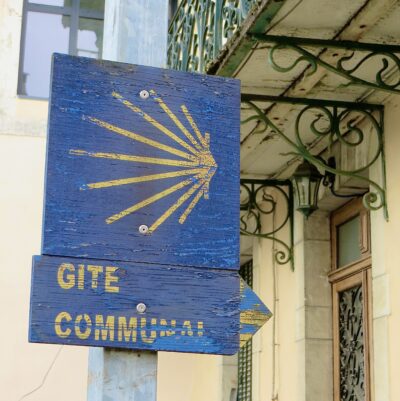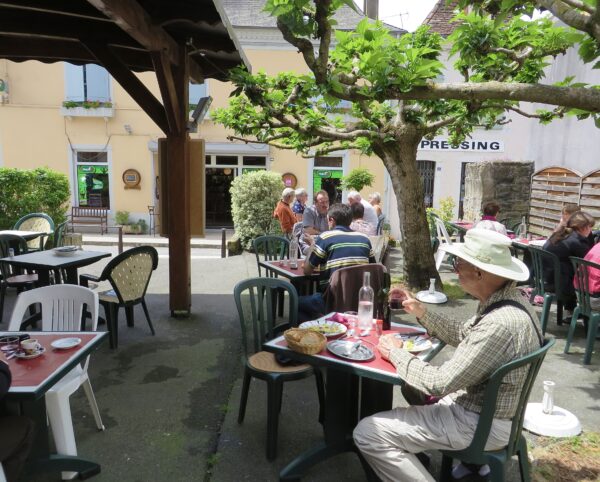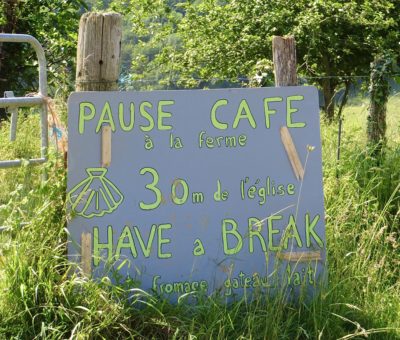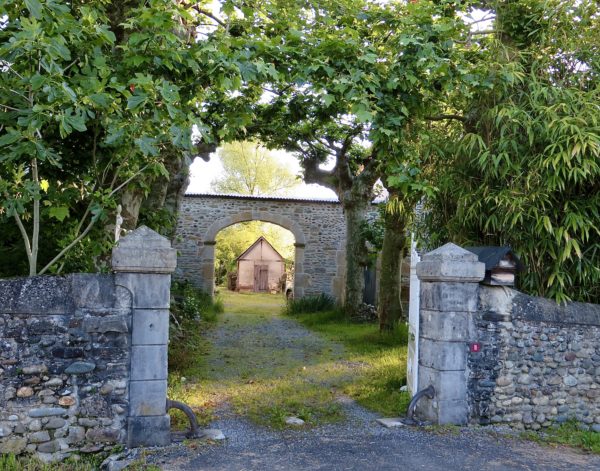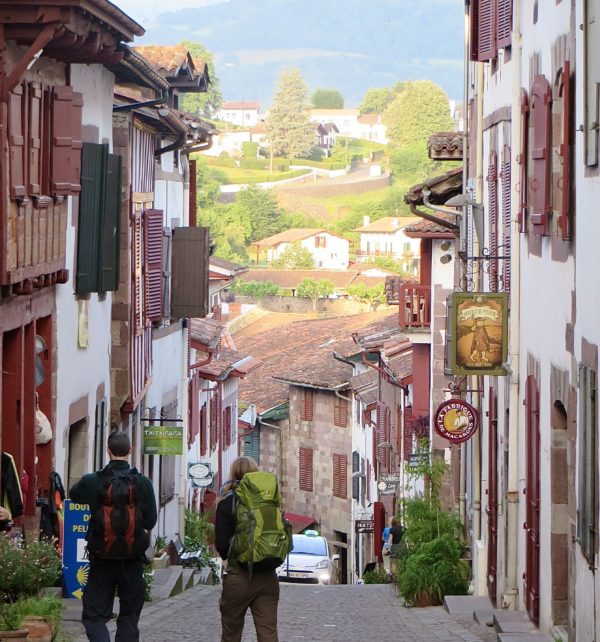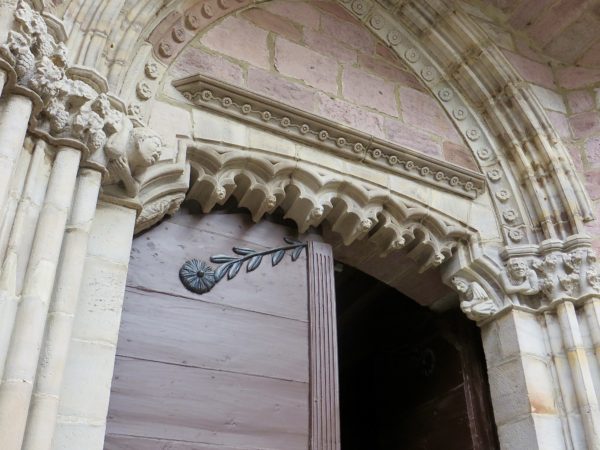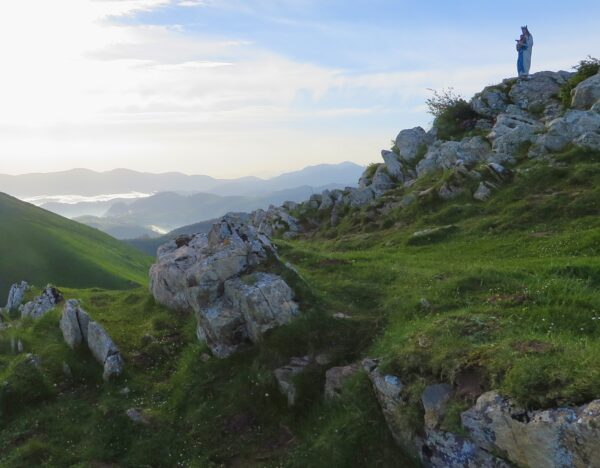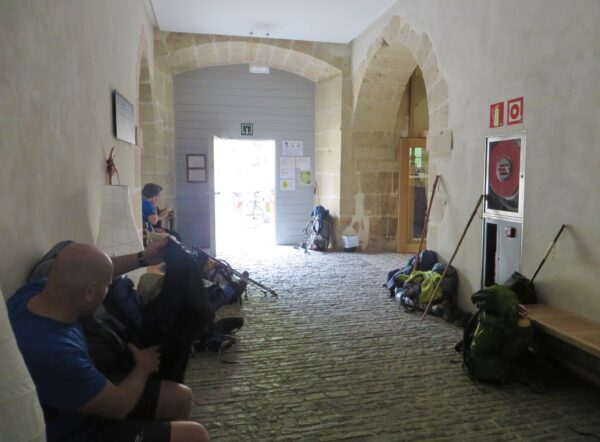The 13th c. bridge over the Gave d’Oloron river in Navarrenx
Interested in a Chemin de St. Jacques walk across France? Consider the Via Podiensis, one of 4 main French trails that connect with Camino Frances in Spain (the others are Via Turonensis from Paris, Via Lemovicensis from Vezelay, & Via Tolasana from Arles). The Via Podiensis begins in the city of Le Puy-en-Velay, thus it’s commonly referred to as “The Le Puy route.” This trail covers 457 miles & finishes in Roncevalles, Spain, a traditional Spanish start of the Frances route.
Guidebooks for the Via Podiensis are available from Miam Miam Dodo, Cicerone, Confraternity of St. James, & Pilgrimage Publications (on Amazon, etc.). Gronze.com also shows maps and lodging choices, including “gite d’etapes” (or “gites”) that are similar to albergues.
The Le Puy route encompasses historic towns & picturesque countryside with stops in Conques, Cahors, & Lectoure among other medieval centers. Walk through regions with dormant volcanos, high plateaus, and the Pyrenees mountains.
The path follows the GR 65 (“Grande Randonnee“) trail, which is part of the GR system of hiking paths crisscrossing Europe. The GR 65 is marked by red & white stripes that are found on signage or painted on rocks, posts, etc. Camino guidance markers often include red & white stripes too.
In 2013 on our second Camino Dad & I walked the last portion of the Le Puy route from Navarrenx. This quaint French town originated in the first century and is listed as one of “The Most Beautiful Villages of France.” Streets are lined with shops, cafes, & powder blue shutters on windows. The town’s fortress features 18th c. St. Anthony’s Gate, and a 16th c. bulwark provides aerial views of the surroundings. While strolling around this landmark we imagined soldiers on guard centuries ago!
Building where our Gite Communal was located
Lunch was eaten at a cute outdoor cafe in the middle of town. A sweet local pup eyed our bread.
A stone sculpture of Saint Jacques helped point the way from Navarrenx to our next stop, Aroue. The trail followed rolling hills and lush green fields dotted with sheep & cows. A bucolic wonderland!
Cafes/bars along the way offered fromage & other culinary treats for refreshment — it’s good to “pause” & rest tired feet.
We walked in early June, & temperatures were pleasant with a few showers that brought out our ponchos. Typically, April-October are the most popular months to go; it’s wise to check out weather patterns & then decide what season would be best based on your preferences. For planning & more guidebook info see Camino Resources, Part 1 & Part 2.
The Le Puy route merges with the trails from Paris & Vezelay in Ostabat where we next stayed. In the evening walkers sat on the gite’s patio and watched sheep wind their way through the rustic town. It’s a common sight in agricultural areas to see animals return home from grazing.
After Ostabat the final stop in France was St. Jean Pied de Port, a place with deep pilgrimage history. The Road turns into Rue de Citadel through the cobblestoned medieval section. Traditional Basque buildings charm with brick red shutters & half-timbered construction.
Crowds of walkers & travelers mix along Rue de Citadel — St. Jean is a tourist favorite and known for colorful linens & espadrille shoes. There’s also a shop selling outdoor gear for any backpack needs.
A shell hangs above Beilari (formerly L’Esprit du Chemin), our gite located across from the Pilgrim’s Office.
The street changes to “Rue de Espagne” where it intersects the River Nive. At this juncture stands 14th century Notre Dame du Bout du Pont (Our Lady at the End of the Bridge) built from schist rock with distinctive red patina.
As the name indicates, the church is located next to the “Pilgrim’s Bridge.” Walkers cross this as they head towards the mountains to reach Roncevalles (via two trail options) where the Via Podiensis officially ends.
The Napoleon route (one option from St. Jean) offers spectacular views of the Pyrenees. At the Pic d’Orisson the Vierge d’Orisson statue looks out over the peaks. The French-Spanish border is around 4 miles from here.
In Roncevalles walkers line up to register at the historic monastery albergue, Albergue de Peregrinos Orreaga Roncevalles. For some people this town will be the start of their Camino Frances journey; many others began the Frances back in St. Jean. And perhaps a few of the Via Podiensis pilgrims will keep walking to Santiago (490 more miles). For us, part of our second Camino itinerary was now completed — onward to the Meseta where we walked next. Buen Camino!

